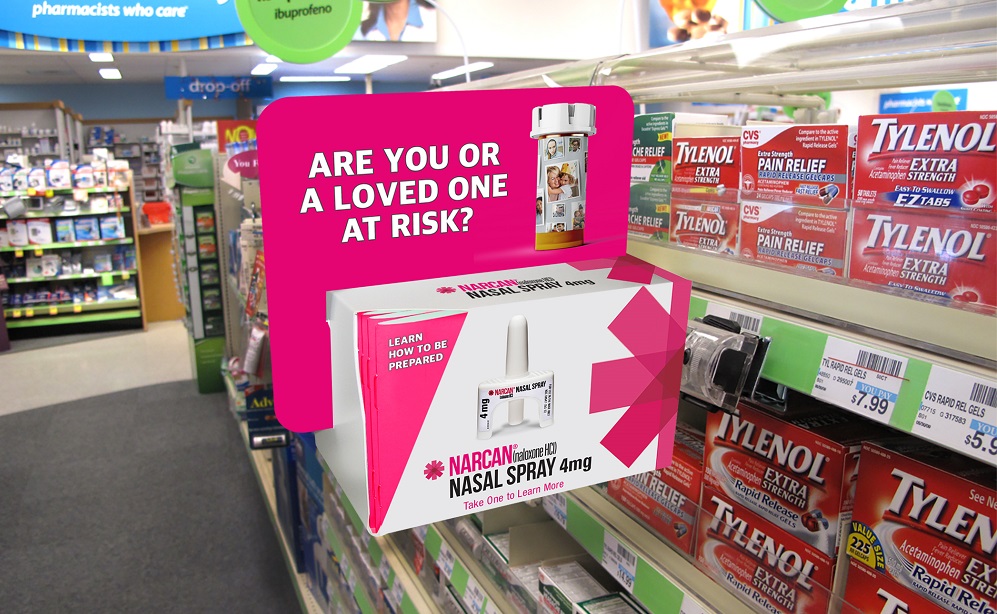
While a lion’s share of the discussion around point-of-care marketing focuses on the physician’s office, pharmacies have continued to emerge as valuable real estate for many marketers. A new program engineered by Rx Edge Media Network, CVS Health and Narcan maker Emergent BioSolutions attempts to tap into that increasing enthusiasm and need.
Launched last month in 600 CVS locations, the program offers a primer on Narcan, Emergent’s anti-opioid-overdose nasal spray. The Rx Edge displays, positioned in the analgesics aisle, feature booklets containing a wealth of administration and safety information. Narcan is now available without a physician’s prescription.
“The target is people who are taking opioids for pain,” says Rx Edge CEO Nate Lucht. “Overdoses can happen in a way when there’s no type of abuse involved – when the wrong types of medications are mixed together, for example.”
The booklets themselves transcend traditional point-of-care fare, both in design (“there’s some flair, some good graphics and colors that make them pop on the shelf,” Lucht says) and content. “We have 12 pages to communicate use cases and value, and how to administer [Narcan]. That’s something you can’t do in a 30-second TV spot or on a page of a magazine or on a billboard. It’s more than the Twitter sound bite that a lot of media offers.”
That’s the argument made by the people and companies behind any number of pharmacy-based programs, which have traditionally attracted a far smaller degree of investment from pharma than other point-of-care destinations. Lucht believes this is about to change.
“I don’t think pharmacies are somewhat underrated [as a channel] for information and education. I think they’re dramatically underrated,” he says. “In a lot of ways, the healthcare journey starts at the pharmacy.”
By way of example, Lucht points to pain management. “This can start with self-medication – Advil or Motrin or Tylenol, which you’re getting at the pharmacy – before the person ends up going to the doctor,” he explains. “When people are trying to treat a certain condition, they’re in what I’d call a mindset moment – ‘I’m here, I’m trying to solve a problem that I have or my loved one has.’ There are lots of mindset moments in pharmacies.
Lucht clearly has skin in the game; pharmacy-centric media is, after all, his company’s central offering. But given the ubiquity of CVS, Walgreens and the like in the lives of most Americans, it remains surprising that so few consumers view the pharmacy as more than a retail environment (and pharmacists themselves as more than the individuals who hand over the prescribed medicines). For their part, pharmacies, their media partners and marketers themselves haven’t been especially aggressive in pushing back against that perception.
CVS Health’s reinvention has started to change the dialogue around the pharmacy environment, and Lucht believes myriad marketing opportunities are there for the taking.
“Pharmacies have something going for them that nobody else does: A pharmacist standing 15 feet away who understands the medications and everything in the store,” he says. “‘What should I make sure not to mix that opioid with?’ ‘I have migraine headaches and Tylenol isn’t helping – any ideas?’ You don’t have to make a doctor’s appointment a week in advance and get nervous waiting for it and then again when you’re there.”






